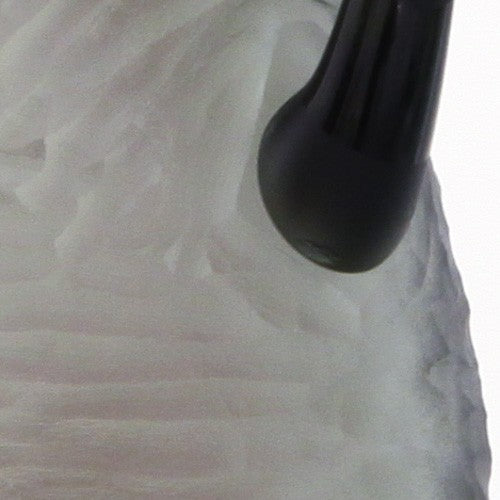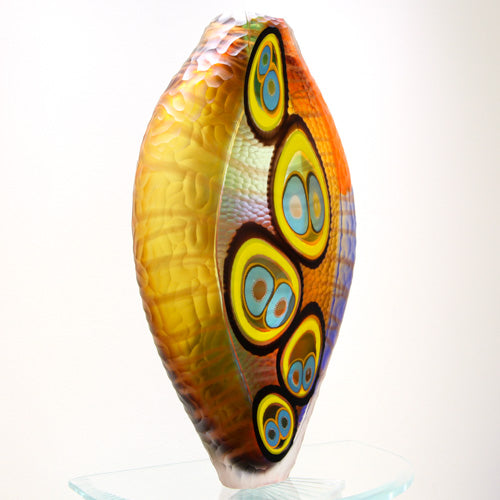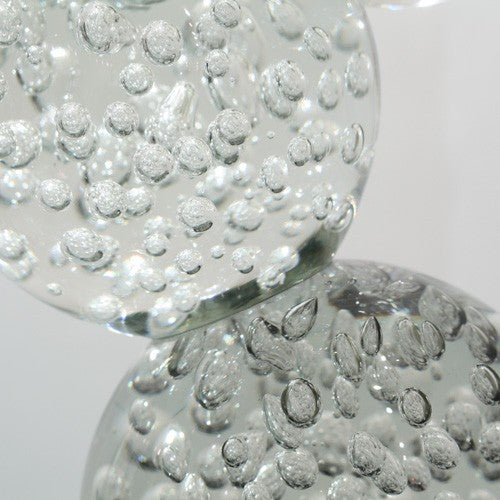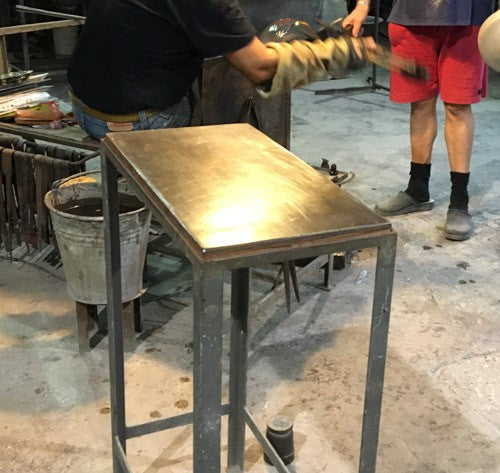This is a type of glass whose surface has a homogeneous set of grindings of variable depth, slightly irregular, in imitation of hammered branches.
The first examples of this type of process go back to the early nineteen hundreds in France, at the Daum works, with the "martelé" vases.
In Murano the technique enjoyed great favour at Venini & Co. , on the part of Carlo Scarpa , who was the first to design a series of items with elementary shapes executed in coloured transparent glass. The particular ground finish of the battuti glassware was conceived by Scarpa early in the 1940s in order to obtain either a hammered silver effect (“honeycomb” battuto-finish) or the typical effect of stone-processing (horizontal and vertical battuto-finish). The first battuto-finished items were exhibited in 1940 at the 22nd Venice Biennale and 7th Milan Triennale.
In the late 50's, Venini & Co. produced another series of items, designed by Tobia Scarpa , Carlo's son, that met with a huge success with the critics and the public as well.
In the 60's the "battuto" was used by Alfredo Barbini to finish some vases of highly plastic shapes, designed by Napoleone Martinuzzi .






Leave a comment
All comments are moderated before being published.
This site is protected by hCaptcha and the hCaptcha Privacy Policy and Terms of Service apply.